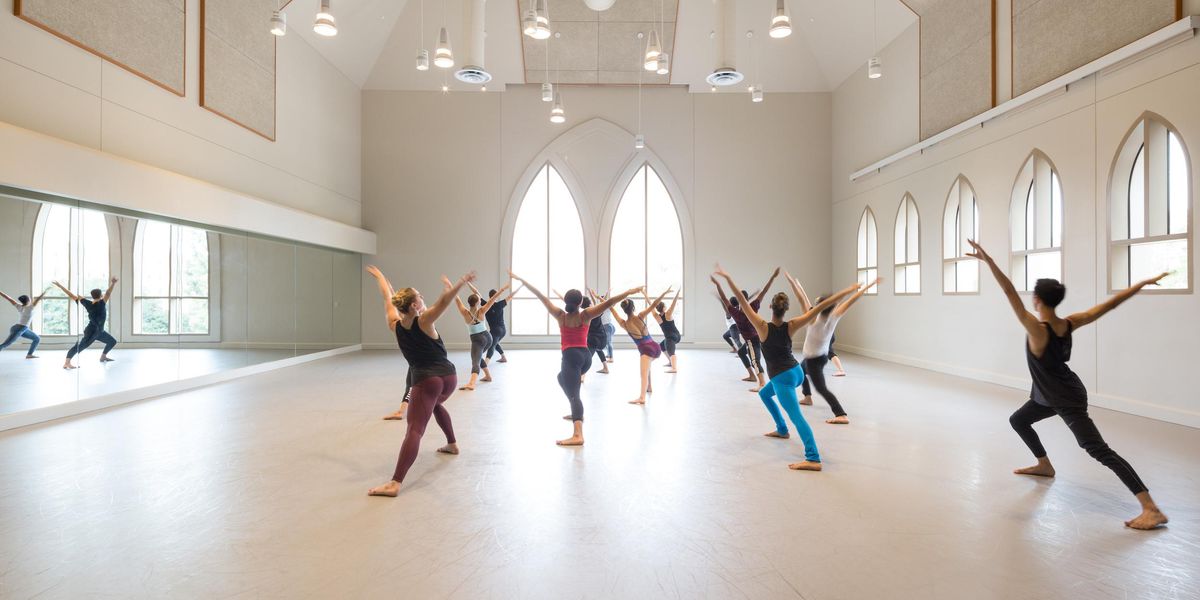Making It Happen: College Goes Commercial
Pace University offers a new program.
Rhonda Miller saw a gap in higher education. Though most college dance programs provide intense training for concert dancers, many are not preparing students for the current job market—a commercial dancescape that often demands hip-hop, ballroom, and the gamut in between. No stranger to the commercial dance scene, Miller—who in 1992 helped found one of Los Angeles’ top professional studios, Edge Performing Arts Center—decided to take action.
A lecturer for Pace University’s theater program since 2008, and now an associate professor, Miller worked with the school’s administration for a year to develop the commercial dance major in 2012. It was their first dance major. Now in its second year, Miller has built the fledgling dance program to emulate intense conservatory training. The BFA program emphasizes versatility: Students take ballet and jazz technique daily, as well as classes in hip-hop, tap, modern, contemporary, theater, and aerial dance, plus singing, acting, and composition. “Students may find work in concert dance,” says Miller, “but I want to give them the tools to make a living in the commercial world, too, from music videos to Broadway, L.A., Vegas and New York.”
The commercial dance major accepts 36 incoming freshmen, who must audition. Students are encouraged to apply for outside internships, and, in addition to dancing in two annual dance-department productions, perform as much as possible within Pace’s wider performing arts program.
When creating the major, Miller looked to her professional connections from L.A. and New York City. Celebrity choreographer Mandy Moore was one of the first artists in residence, and other guest teachers (all funded through the nonprofit Voice of an Angel Foundation) have included Tony Award–winning choreographer Jerry Mitchell, New York City Ballet principal Tiler Peck, and Cirque du Soleil choreographer Cherice Barton.
Mandy Moore works with students in the commercial dance major. Photo:
Courtesy Pace University.
Looking forward, Miller hopes to expand the guest artist series. “I’m reaching out—almost daily!—to increase the number of choreographers that I can expose my students to,” she says.
For sophomore dancer Emily Ramirez, the faculty and guests are certainly a highlight. “All of our teachers keep us up-to-date and encourage us to audition in the real world,” she says. “And since you’re working with so many famous people, the connections can’t be beat.”
Ramirez had her sights set on Pace’s musical theater program when she first auditioned for the school. But when Miller saw her at that department’s dance audition, she suggested that Ramirez check out the new commercial program. “Many musical theater programs look for performers who demonstrate strength in singing, but not all dancers fall into that category,” says Miller. “Here, they’re not expected to come in with vocal training.” Instead, students have the ability to study skills—like acting and singing—that can augment their performances, while primarily focusing on dance.
Using New York City as a classroom, Miller also gives her students the more practical information they’ll need to navigate the professional world. This way, she says, they’ll have a leg up on other young artists who move to the city post-graduation. “We teach them details like how to sign in for an equity call, about fines for being late, and larger ideas like maintaining a strong reputation and adapting to different styles,” she says.
After one year, Ramirez is certain she’s made the right choice. “I’m gaining more than I would have at a musical theater program,” she says. “I’ve learned that it’s helpful to be versatile. You’re more hire-able if you can do it all.”




